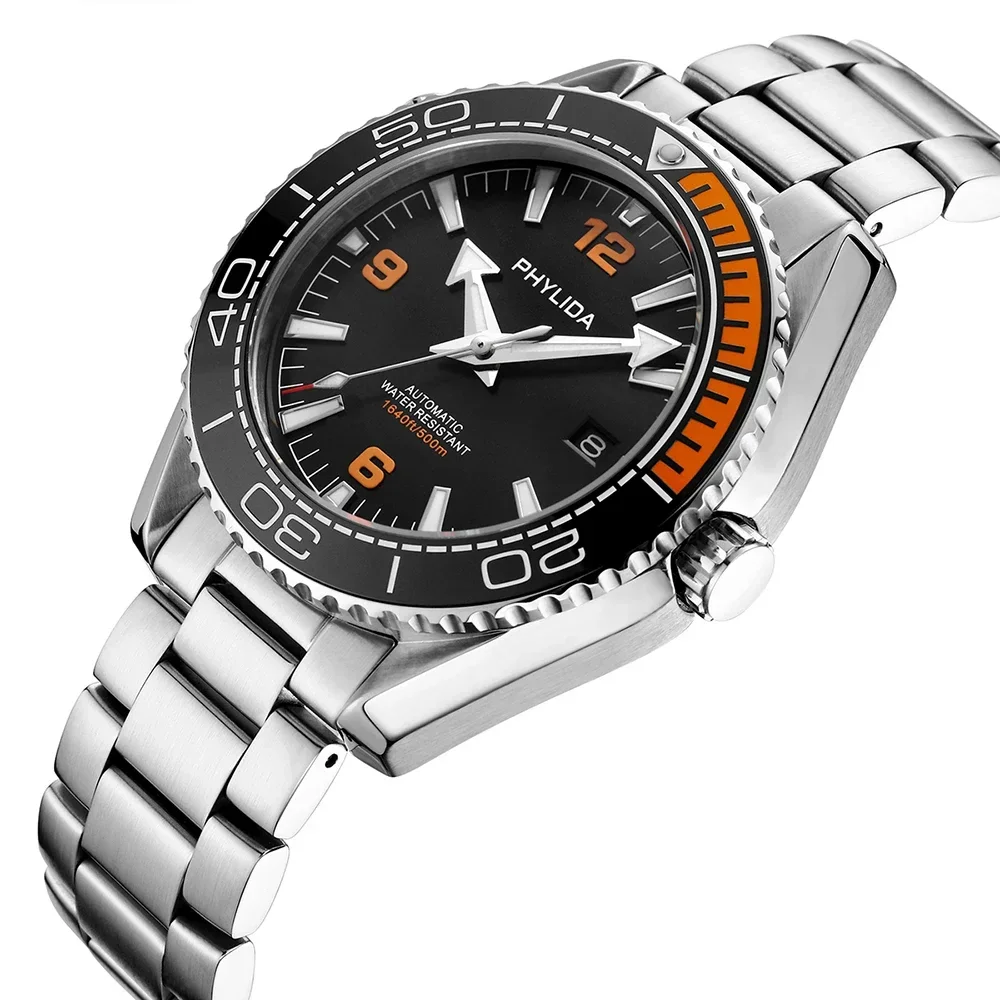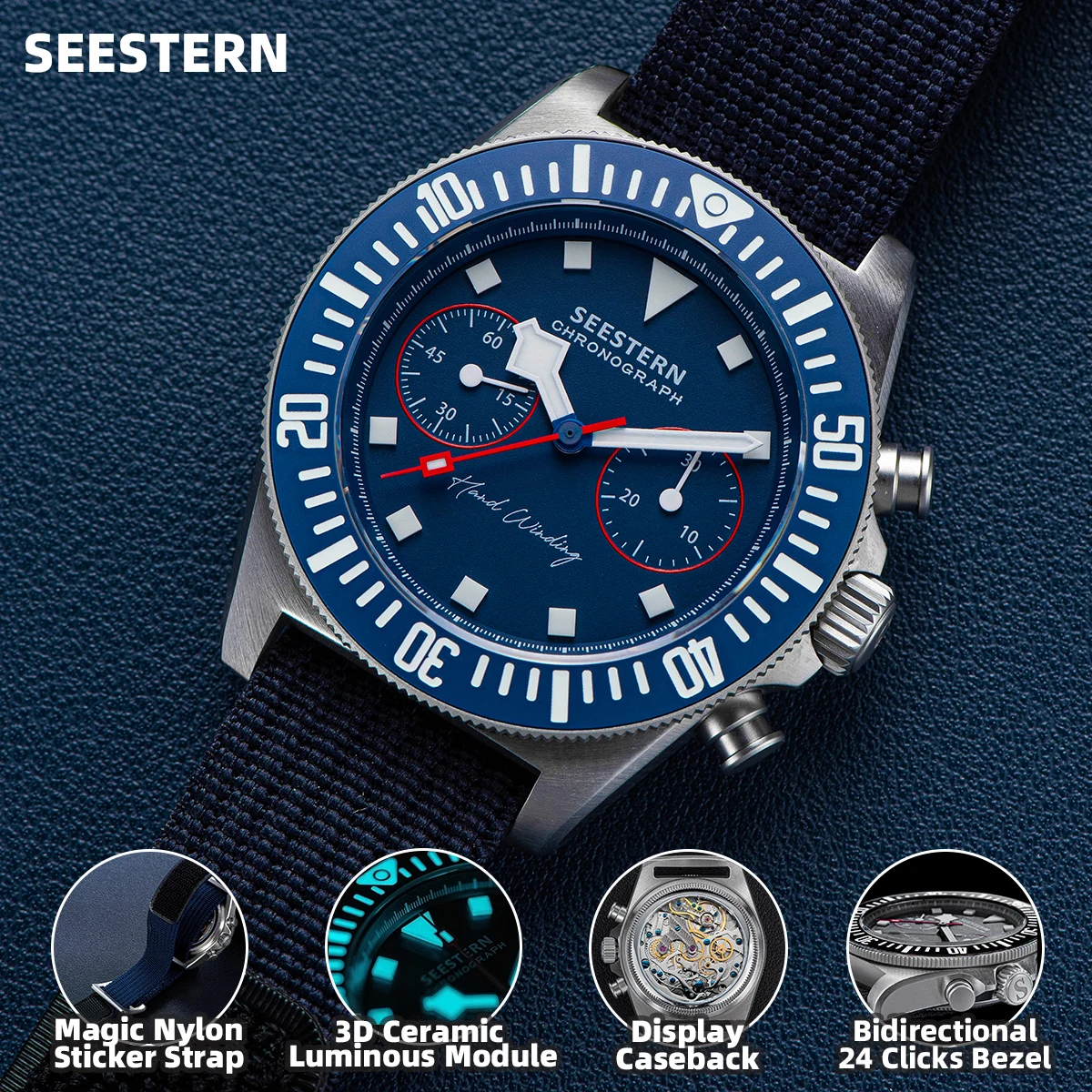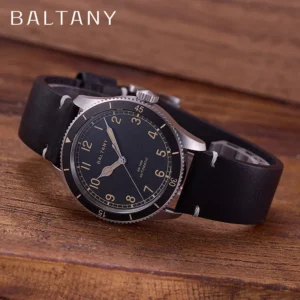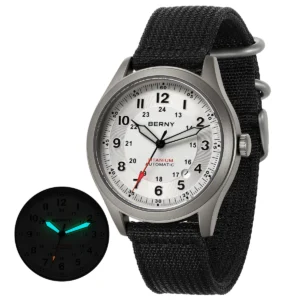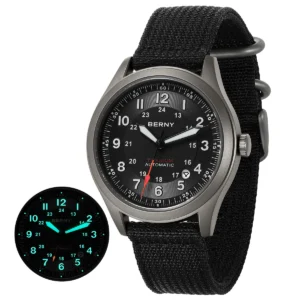Introduction: Why Legibility Matters in Aviation Timepieces
In the high-stakes world of aviation, a flight chronograph is far more than a stylish accessory—it’s a critical instrument that can mean the difference between precision and error, between safety and danger. These specialized timepieces serve as vital tools for pilots, enabling them to track elapsed time, calculate fuel consumption, navigate position, and coordinate complex maneuvers with split-second accuracy.
Legibility—the ability to read a watch quickly and accurately in any condition—isn’t just a desirable feature of flight chronographs; it’s an absolute necessity. When flying at hundreds of miles per hour, pilots simply cannot afford the luxury of squinting at their wrist or second-guessing the time. The consequences of misreading a chronograph by even seconds can cascade into serious miscalculations that affect navigation, fuel management, and emergency procedures.
Throughout aviation history, the history of dive watch engineering shares many parallels with flight chronographs, as both evolved to meet the demands of professionals whose lives depend on instant, accurate time readings. From the earliest days of aviation to modern cockpits, watch legibility has remained a cornerstone of pilot safety and operational efficiency.
The Demanding Cockpit Environment: Why Pilots Need Perfect Readability
Flying an aircraft creates one of the most challenging environments for reading any instrument, including a wristwatch. Pilots face a perfect storm of conditions that make standard watches nearly impossible to read effectively:
Environmental Challenges in the Cockpit:
- Extreme lighting variations: From blinding sunlight at high altitudes to near-darkness during night operations, pilots experience dramatic shifts in lighting that can render poorly designed watches unreadable
- Constant vibration and movement: Aircraft vibrations make focusing on small details difficult, requiring watch designs that can be read despite constant motion
- Glare and reflections: Cockpit windows and instrument panels create multiple sources of glare that can wash out watch faces without proper anti-reflective treatment
- Split attention requirements: Pilots must divide their focus between multiple instruments, communications, and external conditions, leaving only fractions of seconds to glance at a chronograph
- Potential G-forces: Military and aerobatic pilots experience forces that make fine motor control and focus considerably more difficult
These environmental factors create a perfect storm that makes reading a timepiece extraordinarily challenging. The cognitive load on pilots is already immense—they’re processing dozens of inputs simultaneously while making complex calculations and decisions. In such conditions, a chronograph that requires interpretation or close examination becomes not just inconvenient, but potentially dangerous.
The specialized needs of combat aviators share similarities with other military timepieces, as field watch functionality in combat zones demonstrates similar requirements for instant readability under extreme stress. The ability to capture time information with just a fraction of a second’s glance can be critical during navigation fixes, emergency procedures, or when calculating remaining flight time with dwindling fuel reserves.
Essential Design Elements for Optimal Flight Chronograph Legibility
The legibility of flight chronographs doesn’t happen by accident. It’s the result of purposeful design choices that prioritize function over form, though the best examples manage to achieve both. These design elements have evolved through decades of real-world testing and refinement in cockpit environments.
Contrast and Color
The foundation of legibility begins with maximizing contrast between the dial and its markings. The most effective flight chronographs typically feature:
- High-contrast color combinations, with black or dark blue dials paired with white or yellow markings
- Strategic use of color to differentiate between primary timekeeping and chronograph functions
- Panda dials (white background with black subdials) or reverse panda configurations (black background with white subdials) to enhance the readability of chronograph functions
- Matte finishes that minimize unwanted reflections and glare
- Selective use of accent colors only when they enhance functional distinction
Dial Layout and Typography
The arrangement and style of information on the dial plays a crucial role in instant recognition:
- Clean, uncluttered layouts that prioritize essential information
- Sans-serif fonts that maintain readability at various angles and distances
- Appropriately sized numerals that balance visibility with space constraints
- Adequate spacing between elements to prevent visual confusion
- Strategic use of white space to create clear visual hierarchies
- Consistent minute/second tracks with visible demarcations
Hand Design
The hands of a flight chronograph must be instantly distinguishable from one another:
- Distinctive shapes for hours, minutes, and chronograph seconds hands
- Properly proportioned lengths—hour hands reaching hour markers, minute hands extending to minute tracks
- Adequate width for visibility without becoming bulky or obstructive
- High-contrast coloration or inlays that stand out against the dial
- Counterbalanced chronograph seconds hands to maintain accuracy and readability during movement
The best chronograph pilot watches integrate these elements seamlessly, creating timepieces that can be read at a glance even in challenging conditions. The most successful designs achieve this technical functionality while maintaining aesthetic appeal—proving that form and function can coexist when thoughtfully executed.
Luminescence: The Critical Element for Low-Light Legibility
No aspect of flight chronograph design is more critical for around-the-clock operations than effective luminescence. The ability to read a watch in low light or complete darkness isn’t just a convenience—it’s essential for night flying, dawn takeoffs, dusk landings, and operations in adverse weather conditions.
Evolution of Luminous Materials
Luminous watch technology has undergone dramatic transformation:
- Early radium-based compounds (1910s-1950s) provided excellent brightness but posed serious health hazards
- Tritium (1960s-1990s) offered safer radioactive illumination with moderate brightness and 10-12 year half-life
- Modern photoluminescent materials like Super-LumiNova and Chromalight provide intense initial brightness without radioactivity
- Latest-generation compounds can maintain readability throughout an entire night flight
Strategic Application for Aviation Use
In flight chronographs, luminescence must be applied thoughtfully:
- Hour and minute hands receive the brightest and most generous application
- Hour markers are typically bold and evenly illuminated
- Critical chronograph elements like the central seconds hand often feature luminous tips
- Bezel markers for timing functions are illuminated for night operations
- Subdials employ selective illumination to maintain legibility without creating confusion
Balancing Night and Day Performance
The true challenge lies in creating a system that works equally well in darkness and daylight:
- Colored lume compounds must remain visible during the day
- Sandwich dial constructions can enhance both day and night visibility
- Recessed luminous elements protect against fading from UV exposure
- Multi-layer application techniques provide longer-lasting brightness
Many classic pilot watches showcase these luminescent design principles, demonstrating how this technology has evolved while maintaining the core functionality pilots require. The best examples provide instant readability in any lighting condition without requiring the wearer to activate additional light sources or adjust their eyes.
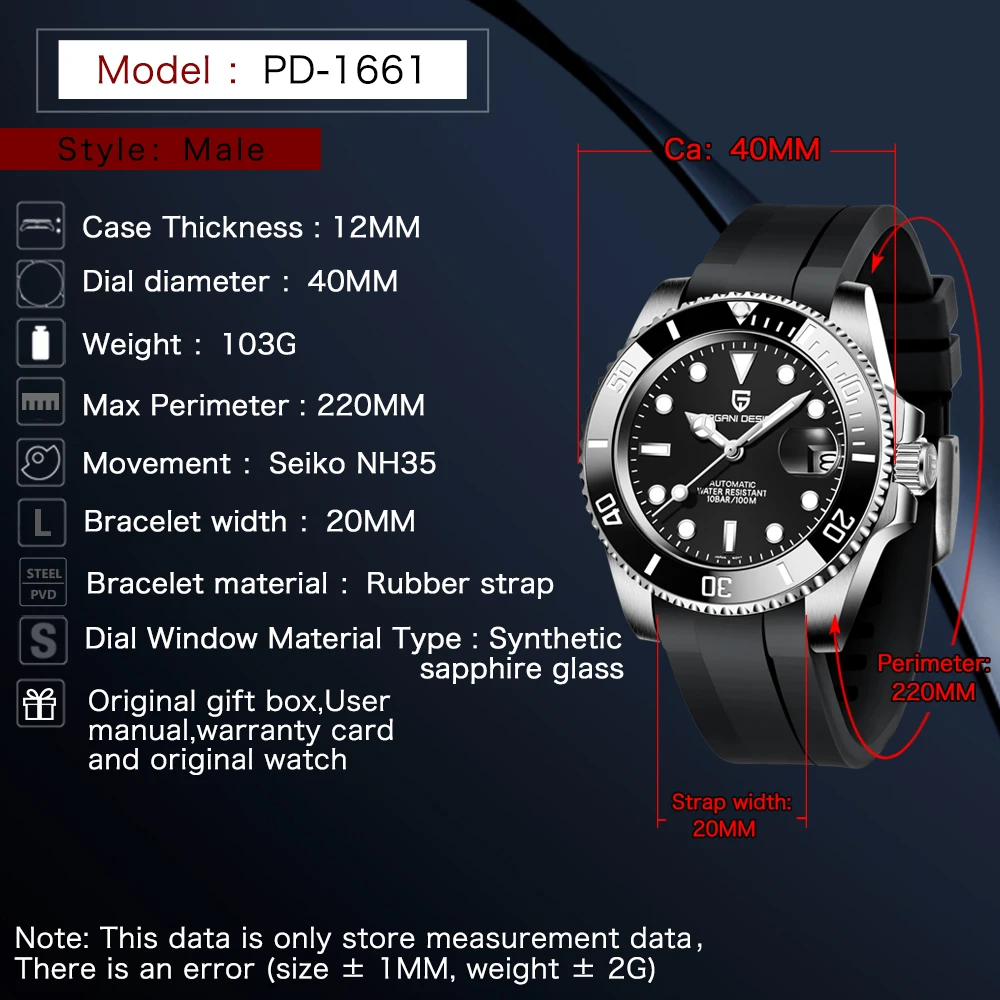
Critical Chronograph-Specific Legibility Considerations
Chronographs present unique legibility challenges beyond those of simple three-hand watches. Their additional complications—typically including multiple subdials, extra hands, and specialized scales—create a balancing act between functionality and clarity.
Subdial Design and Differentiation
Effective flight chronographs solve these problems through:
- Clear visual separation between subdials through spacing and borders
- Contrasting colors or finishes to distinguish between different timing functions
- Properly sized subdials that balance readability with overall proportion
- Consistent design language across all subdials to maintain visual harmony
- Strategic placement to prevent overlapping or crowding
Chronograph Hand Visibility
The central chronograph seconds hand must be:
- Distinctly colored or shaped to stand out from primary timekeeping hands
- Precisely balanced to maintain accurate readings during aircraft vibration
- Properly counterweighted to prevent timing inaccuracies
- Tipped with high-visibility colors or luminescence
- Sized to precisely reach timing scales without overshooting
Scale Design for Precise Readings
Scales must be engineered for instant, accurate readings:
- Clear demarcation between seconds, minutes, and hours
- Appropriate sizing of numerals and hash marks
- Logical spacing that facilitates quick mental calculations
- High contrast that maintains readability in various lighting
- Minimal unnecessary markings that could cause confusion
Mastering essential pilot chronograph features involves understanding how these elements work together to create a harmonious whole. The most successful designs maintain perfect legibility even while incorporating multiple timing functions, tachymeters, telemeter scales, and other specialized tools.
The Historical Evolution of Legibility in Flight Chronographs
The development of flight chronograph legibility is a fascinating journey of innovation driven by necessity. As aviation itself evolved from dangerous experiment to routine transportation, watches evolved alongside to meet increasingly demanding requirements.
The earliest pilot watches focused on basic legibility, with large numerals and hands designed to be read while managing primitive aircraft controls. These watches were often pocket watches adapted for wrist wear, as pilots needed to keep their hands free for aircraft operation.
World War II dramatically accelerated the development of standardized legible designs:
- German Flieger watches established the Type A (simple hour numerals) and Type B (emphasized minutes) standards that influence designs to this day
- Allied forces developed strict specifications for pilot watches, emphasizing visibility and reliability
- Oversized crowns and cases emerged to allow operation while wearing flight gloves
- High-contrast black and white designs became the standard for maximum readability
The post-war period saw the refinement of the chronograph specifically for aviation use. As jet aircraft introduced new challenges with higher speeds and altitudes, watches adapted with:
- More sophisticated timing subdials for longer flight segments
- Integration of navigation-specific scales and calculators
- Enhanced water resistance for changing atmospheric conditions
- Improved shock resistance for jet aircraft vibrations
Throughout this evolution, automatic pilot watches maintained the core principles of legibility while incorporating self-winding mechanisms that eliminated the need for daily manual winding—a significant advantage for pilots managing complex flight preparations.
How to Evaluate Flight Chronograph Legibility
For pilots, collectors, and enthusiasts looking to assess the legibility of a flight chronograph, several key factors should be examined:
Practical Legibility Checklist
- Contrast test: View the watch under various lighting conditions, from direct sunlight to dim indoor lighting
- Glance test: Can you accurately read the time with just a half-second glance?
- Angle test: Is the watch readable from various angles, as would be necessary in a cockpit?
- Differentiation test: Without looking closely, can you instantly tell the chronograph hands from the time-telling hands?
- Subdial clarity: Are the subdials easily readable without requiring focused attention?
- Lume performance: After exposure to light, how quickly can you read the watch in a darkened room?
- Reflection evaluation: Does the crystal produce distracting reflections that obscure the dial?
Balancing Aesthetics with Functionality
When evaluating flight chronographs, it’s important to recognize that while decorative elements can enhance the visual appeal, they should never compromise core functionality. The most respected pilot watches strike a careful balance, incorporating distinctive design elements while maintaining the utilitarian legibility that defines the category.
Innovations in dive watch technology often parallel developments in aviation timepieces, as timeline of diving watch innovations demonstrates similar emphasis on legibility under challenging conditions. Both categories demand instant readability when failure could have serious consequences.

Is Digital Better Than Analog for Flight Legibility?
The analog versus digital debate continues among pilots and aviation enthusiasts, with compelling arguments on both sides. Each format offers distinct advantages for cockpit use.
Advantages of Analog Flight Chronographs
- Pattern recognition: The positions of hands create distinctive patterns that can be recognized almost instantaneously
- Spatial awareness: The relationship between hands provides intuitive understanding of elapsed time
- No power requirements: Traditional mechanical watches function without batteries or charging
- Relative time judgments: Quick assessment of approximate time remaining (quarter hour, half hour) through hand positions
- Reliable in extreme conditions: No concerns about screen washout in bright sunlight or power loss
Advantages of Digital Timepieces
- Numerical precision: Exact digital readouts eliminate any potential misreading
- Multiple information display: Can show various time zones, calculations, and functions simultaneously
- Integrated backlighting: Push-button illumination in low-light conditions
- Additional functionality: Easily incorporates alarms, countdowns, and specialized aviation functions
- No ambiguity: Eliminates possible confusion between hour and minute hands
Despite advances in digital technology, many professional pilots still prefer traditional analog chronographs for their reliability, instant readability through pattern recognition, and independence from power sources. This preference reflects the enduring practicality of traditional horological design principles established during the birth of aviation timepieces.
The optimal solution for many modern pilots combines both approaches—wearing a traditional analog flight chronograph while also utilizing digital cockpit instruments and perhaps a smartwatch as backup. This redundancy ensures reliable time information regardless of circumstances.
Automatic Chronograph Watches, Chronograph Pilot Watches
Price range: $233.36 through $237.58 Select options This product has multiple variants. The options may be chosen on the product pageClassic Automatic Dress Watches, GMT Automatic Watches, GMT Pilot Watches
Price range: $1,240.86 through $1,463.33 Select options This product has multiple variants. The options may be chosen on the product pageAutomatic Chronograph Watches, Classic Style Dive Watches
$3,053.06 Select options This product has multiple variants. The options may be chosen on the product pageClassic Pilot Watches, Military Inspired Automatic Watches
$561.00 Select options This product has multiple variants. The options may be chosen on the product pageClassic Field Watches, Classic Pilot Watches, Rugged Automatic Watches, Titanium Automatic Watches
Price range: $425.24 through $496.28 Select options This product has multiple variants. The options may be chosen on the product pageClassic Field Watches, Classic Pilot Watches, Military Inspired Automatic Watches, Titanium Automatic Watches
Price range: $425.24 through $496.28 Select options This product has multiple variants. The options may be chosen on the product page
Conclusion: Why Legibility Will Always Remain the Priority in Flight Chronographs
The fundamental importance of legibility in flight chronographs transcends trends, technologies, and time itself. While aviation has advanced from fabric-covered biplanes to supersonic jets, the critical need for instant, accurate time readings remains unchanged. A pilot’s chronograph that cannot be read quickly and accurately in any condition fails at its primary purpose, regardless of its other merits.
The elements that contribute to optimal legibility—high contrast, thoughtful typography, proper hand design, effective luminescence, and careful chronograph integration—form a design language that has been refined through decades of real-world testing. These principles represent not merely aesthetic choices but functional requirements born of necessity in one of the most demanding environments for timekeeping instruments.
At Sharp Aspect, we understand that the marriage of form and function reaches its highest expression in pilot chronographs where design serves a vital purpose. The best automatic chronograph watches honor this tradition by combining precision engineering with uncompromising legibility—creating timepieces that would serve a pilot well while also satisfying the most discerning watch enthusiast.
In a world increasingly dominated by digital displays and disposable technology, the enduring relevance of the analog flight chronograph speaks to the timeless value of purposeful design that places human needs at its center. When life moves at the speed of flight, legibility isn’t just a feature—it’s the foundation upon which everything else depends.
